Die 10 besten Vergütungsmanagement-Software im Jahr 2025
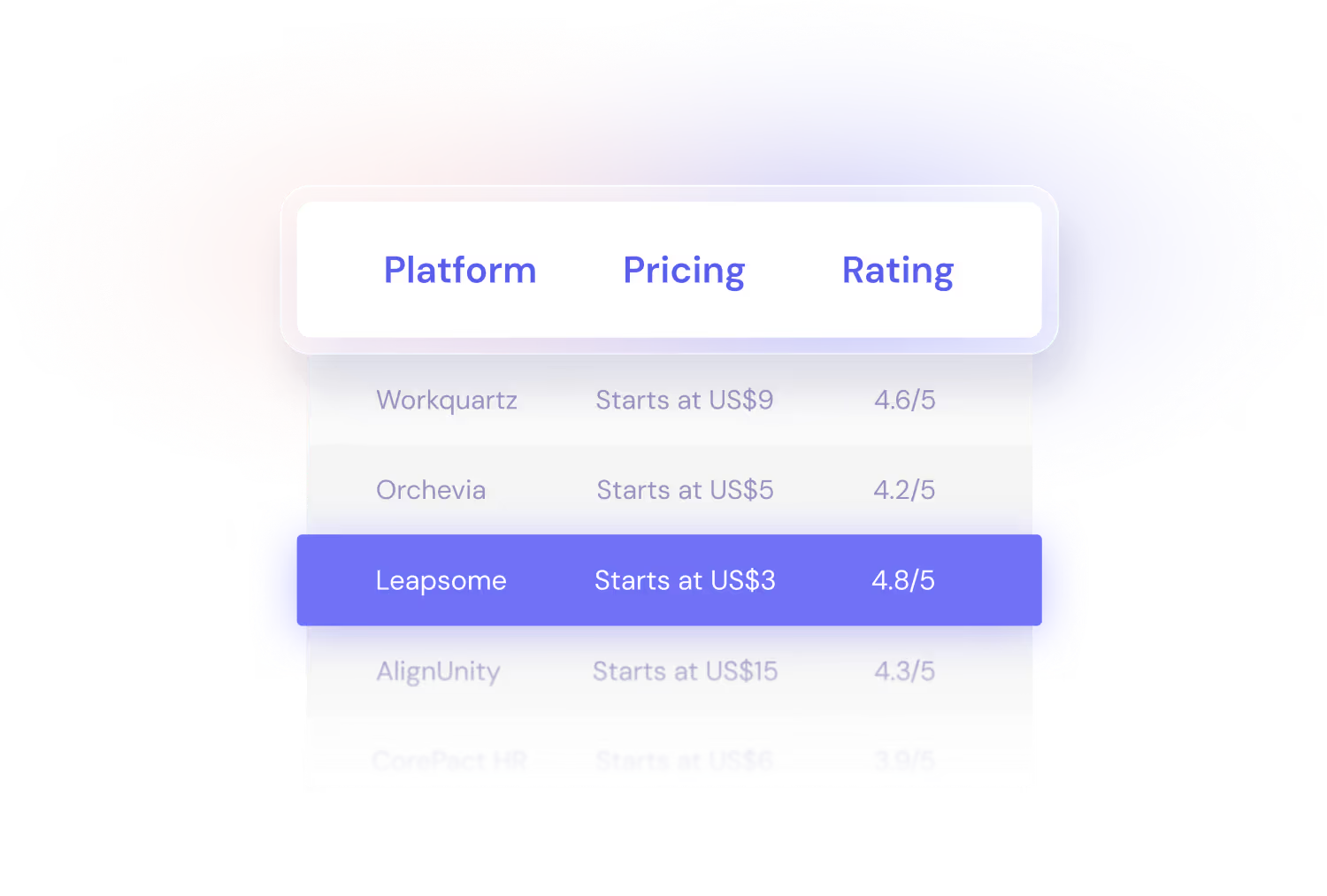
Forward-looking companies need to start thinking about compensation as a long-term strategy for recruitment and retention — not a reactive, quick-fix solution.
That means it’s time to move away from inflexible manual processes, outdated metrics, and “gut decisions.” Instead, you should implement a comprehensive compensation management solution.
However, with the breadth of options available, where do you start? Choosing the right compensation planning software takes research and time, but we’ve done the work for you by building out a detailed compensation management software comparison. Scroll down for a shortlist of the top ten compensation plan software solutions.
*The information below is based on our research between April and May 2024. All user feedback referenced in the text has been sourced from independent software review platforms such as G2 and Capterra in May 2024.

Important criteria for compensation management solutions
Managing employee compensation in a fair, equitable, and sustainable way takes more than a strategy — you need software that’ll bolster your compensation planning practices. Here are some key elements you shouldn’t go without when choosing the best compensation management solution for your organization’s needs.
Scalability
As companies evolve, so do their compensation planning needs. Ask yourself, is the employee compensation software I’m considering designed to handle more users and sophisticated tasks as the business grows?
Analytics
Easy-to-understand analytics will help you create a more transparent compensation process — and your finance department will appreciate them for better budgeting.
Intuitive UI
An excellent compensation software solution should be easy for leaders, managers, and individual contributors to use. Avoid options that are clunky or hard to customize.
1. Leapsome

Our all-in-one platform takes a holistic approach to employee growth and enablement.
Leapsome is committed to helping ambitious, people-centered businesses manage every aspect of their people development — from promotions and compensation to feedback and learning.
Our compensation management solution is a great option for companies that see compensation as a way to motivate, reward, and retain employees, as it integrates seamlessly with our Goals, Reviews, and Competency Framework tools.
Interconnected compensation and performance management systems give managers and HR leaders better, more detailed visibility into employee performance. They also help prevent unconscious bias when making assessments and recommendations about raises or bonuses.
Leapsome is ideal for organizations that want to make data-informed decisions around employee promotions and compensation. Our analytics dashboard gives you quick insight into your company’s pay bands and pay distribution. That way, managers and stakeholders will have internal standards to guide processes like updating salary bands or offering employees raises or promotions.
Notable features
- Customizable templates for a structured compensation review process
- Compensation benchmarking data from industry-leading provider Mercer
- Access to employee information around performance reviews, goals, and competency frameworks
- Easy to coordinate compensation and performance review cycles
- Smart compensation recommendations for managers based on set rules
- Simple to track compensation review progress and analyze review results
And Leapsome includes the following features with any module:
- HRIS integrations
- A free Meetings tool
- An Instant Feedback feature
- Slack and Microsoft Teams integrations
- Award-winning customer support
- SSO and encryption features
- ISO 27001 compliance
- Multilingual interface
- Supports 38 languages
- Great user experience and intuitive UI
- Easy to implement across organizational levels
- Streamlines people processes by bringing different tasks into one place
- High praise for enabling better communication between departments
- Compensation tool integrates with reviews, goals, and development framework features
- Continuous platform improvements may lead to occasional bugs
- No mobile app (yet)
Erfolge unserer Kunden
💥 Eine gerechte Vergütung sorgt für eine blühende Kultur
Erfahren Sie, wie Leapsome es Benutzern ermöglicht, transparente, datengestützte Vergütungsprozesse aufzubauen, die das Mitarbeitererlebnis bereichern.
Book your demo
2. Anaplan

Anaplan is a cloud-based business modeling and planning software that aims to provide data for better collaboration and decision-making.
The software delivers a single hub for users to build, deploy, maintain, and share business models without coding or relying on IT departments or data scientists. Once they upload their internal data to Anaplan’s cloud, users can analyze diverse data sets from various areas of their business, such as their HR, finance, or sales departments.
Notable features
- Predictive intelligence
- Excel-style models that make for easier data comprehension
- Enterprise-wide cloud security
- Flexible data sharing
- Extensions for Google Sheets, Microsoft Excel, PowerPoint, and Office 365
- Allows for complex workflow process management
- Clear analytics make understanding data easier
- Great enterprise solution
- list item
- Not specifically a compensation planning tool but offers features for compensation planning
- Reportedly steep learning curve for model building within the platform
- list item
3. Beqom
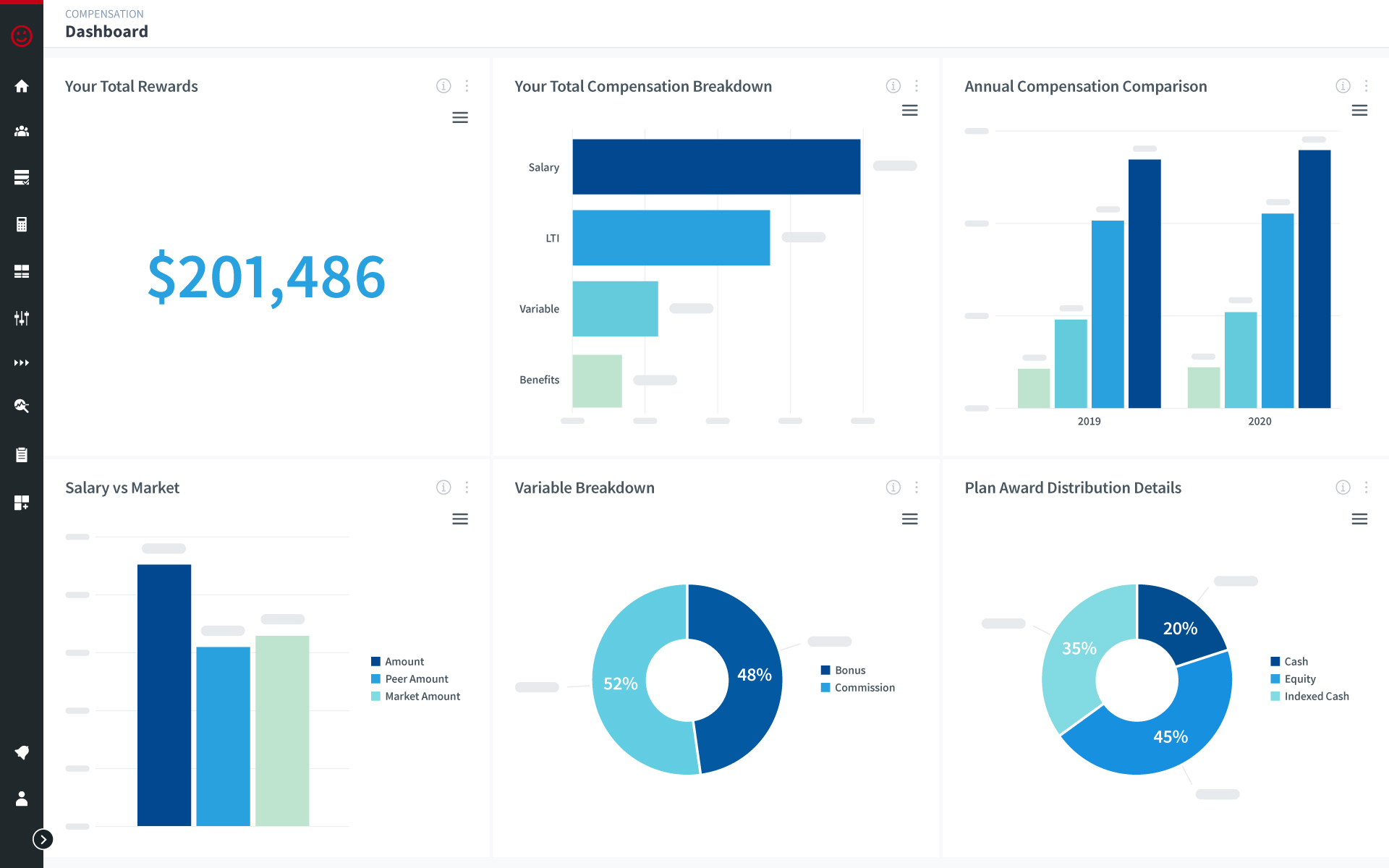
beqom is a compensation platform that’s designed to help organizations streamline and integrate their approach to incentives and compensation. The compensation management solution’s core focus is total compensation — so it enables companies to manage their end-to-end compensation review process.
With beqom’s analytics dashboards, managers and leadership can get visibility into every employee’s total rewards structure, identify workforce patterns and changes, and spot potential obstacles.
Notable features
- Salary management
- Bonus management
- Individual compensation planning
- Long-term incentives and bonus deferral data
- Equal pay analysis and compliance features
- Self-service aspects
- Detailed reporting
- list item
- Limited options to integrate compensation and promotion practices
- Some reported issues with the beqom support team
- list item
4. Bob (HiBob)

Hibob is a human resources information system (HRIS) platform with tools for team, performance, and compensation management.
Bob’s compensation solution gives you access to local salary benchmarks and allows for collaborative compensation decisions across departments and levels.
Notable features
- Team management tools for time tracking, attendance, and paid time off
- Performance management
- Compensation management
- Some users feel the platform is missing features in some areas
- Employee goals, OKRs, and development frameworks don’t integrate with compensation
- list item
5. ChartHop

ChartHop helps managers assemble data to make unbiased decisions around compensation. This includes insights on current salary, equity, and total compensation bands, as well as employee information relating to recent raises and length of time with the organization.
ChartHop’s compensation platform also lets you share this data company-wide. This is particularly helpful if, for instance, your finance department wants to see how recent compensation decisions will impact budgeting.
Notable features
- Compensation management
- Performance management
- Organization and headcount planning
- Diversity, equity, and inclusion (DEI) dashboards and reports
- HRIS integrations
- Easy to see employees’ growth over time
- Good visualization of organizational charts
- Simple to see and compile reports with data sheets
- list item
- Reported learning curve for organizational use
- Some users say that data isn’t always up-to-date in real-time
- list item
6. Compport
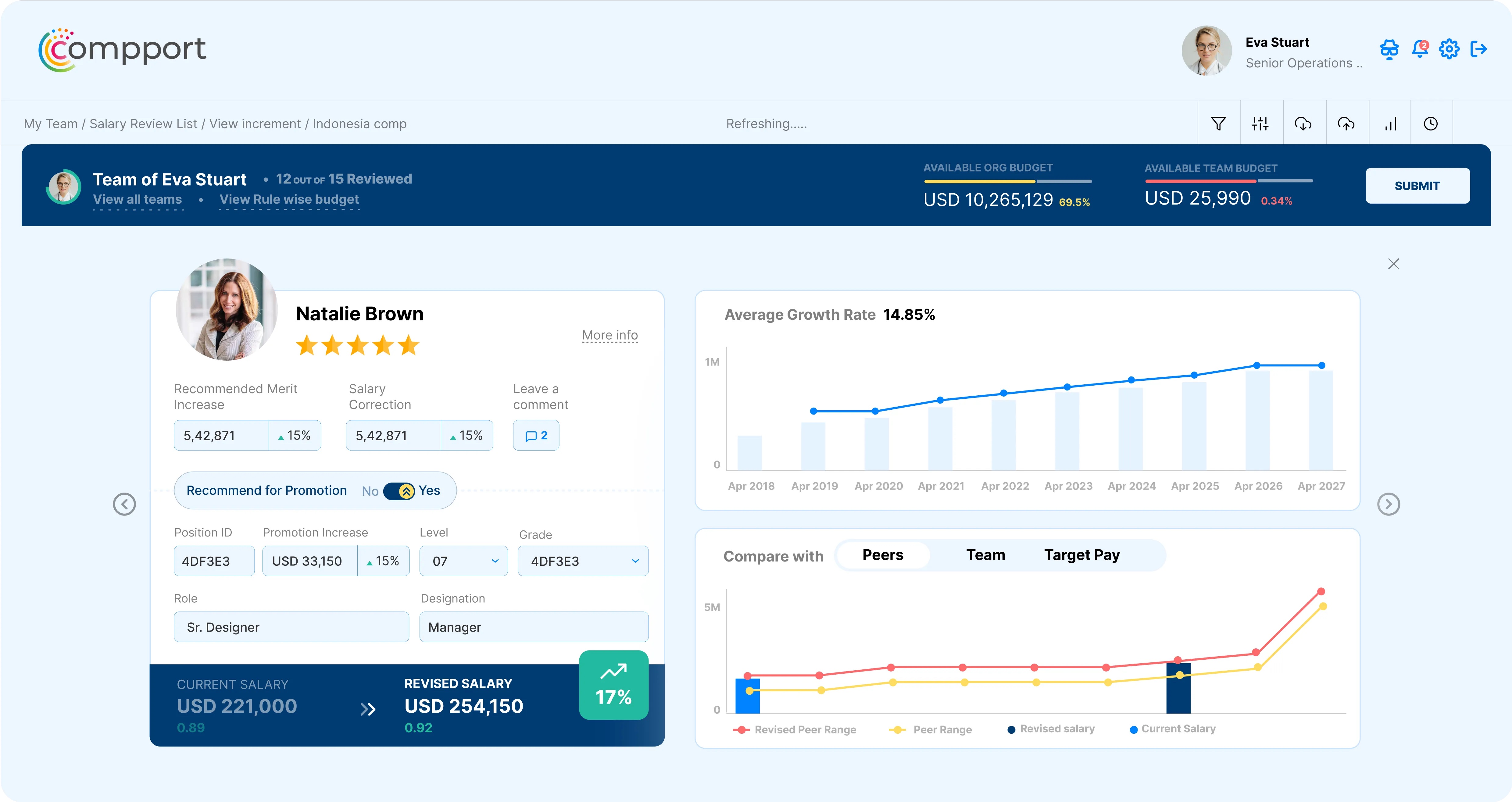
Compport is a compensation management system that helps you manage various aspects of the compensation management process, including salary planning, reward and recognition plans, bonus and incentive management, and salary reviews. Compport users can also access analytics to gain insight into internal trends like turnover, gender diversity, and productivity.
Notable features
- Automated merit or ad hoc salary increments
- Bonus and incentive management
- Salary structuring
- Pay equity management
- Multidimensional analytics
- Some users have reported slow loading times
- Can be challenging for new users to navigate
- list item
7. Gradar

Gradar is a job evaluation software that provides consultant-level insights and lets you analyze and assess your roles across 25 grades and within three general career paths: individual contributor, management, and project management. Then, use those insights to create career frameworks, remuneration schemes, and compensation structures.
The platform’s compensation benchmarking software enables you to upload internal job evaluation results and market data so you can set up total compensation benchmarks for each role in your organization.
Notable features
- Job evaluation
- Competency management
- Compensation benchmarking
- Compensation structuring
- Equal pay analysis
- Users report good customer service
- Modern approach to job evaluation
- list item
- Steep learning curve
- No integrated tools for internal communication, performance review, or employee goals
- list item
8. Payfactors
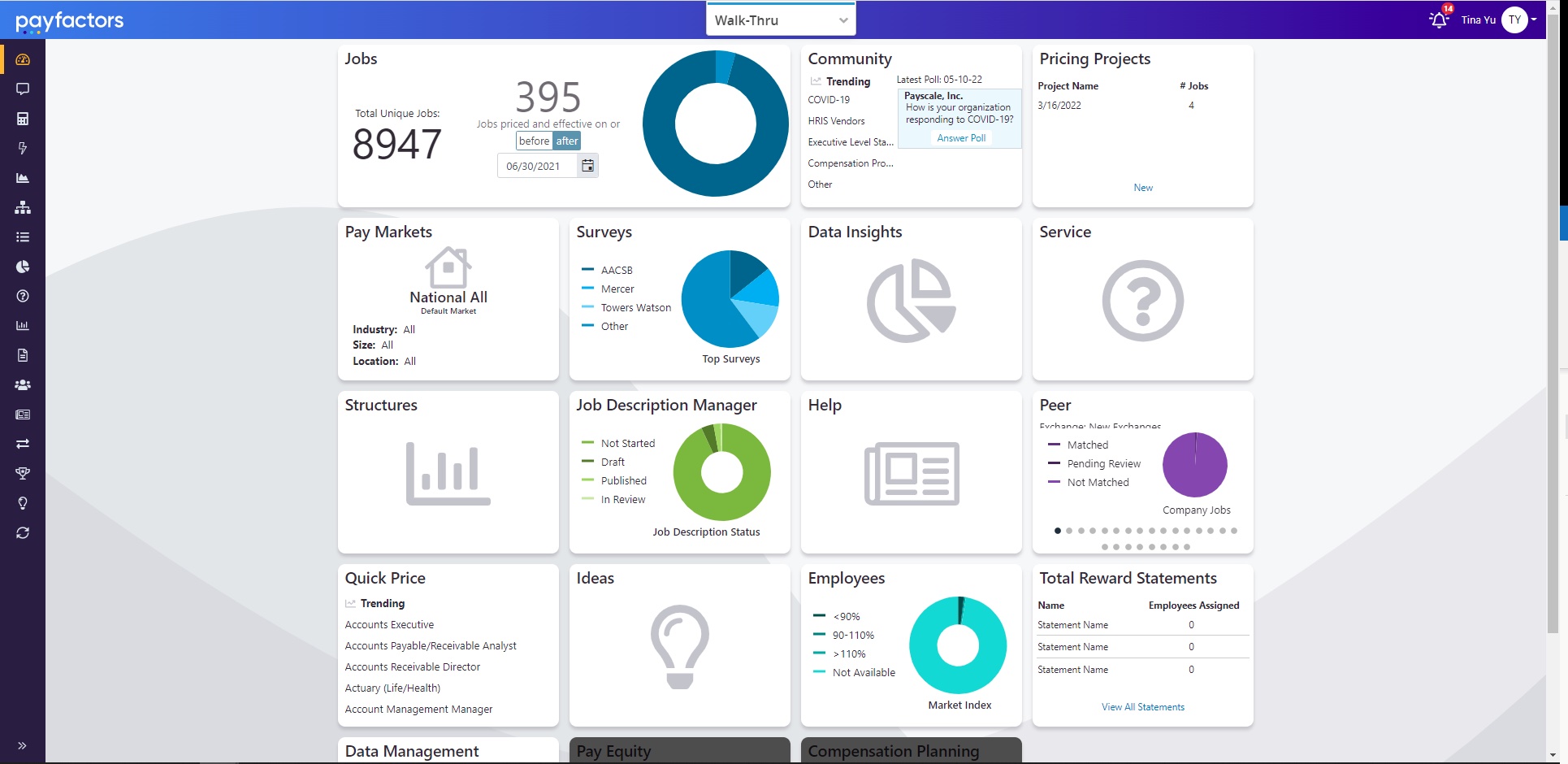
Payscale’s software for compensation — Payfactors — uses three distinct data sets to help organizations take a more predictive approach to their compensation planning. Payfactors users can make compensation-related decisions based on insights from industry peers, HR market analysis, and Payscale’s employee-reported salary database.
One standout Payfactors feature is its function for “what-if” scenarios, which lets you model the impacts of potential market or internal changes on your compensation scheme.
Notable features
- Market pricing
- Compensation planning
- Total rewards statements
- Reporting and analytics
- Pay equity monitoring
- Accurate salary information
- Access to comprehensive datasets for compensation structuring
- Users enjoy the community page, where they can connect with peers and discuss compensation
- list item
- Reportedly “clunky interface”
- No integrated features for performance management and employee engagement
- list item
9. SimplyMerit
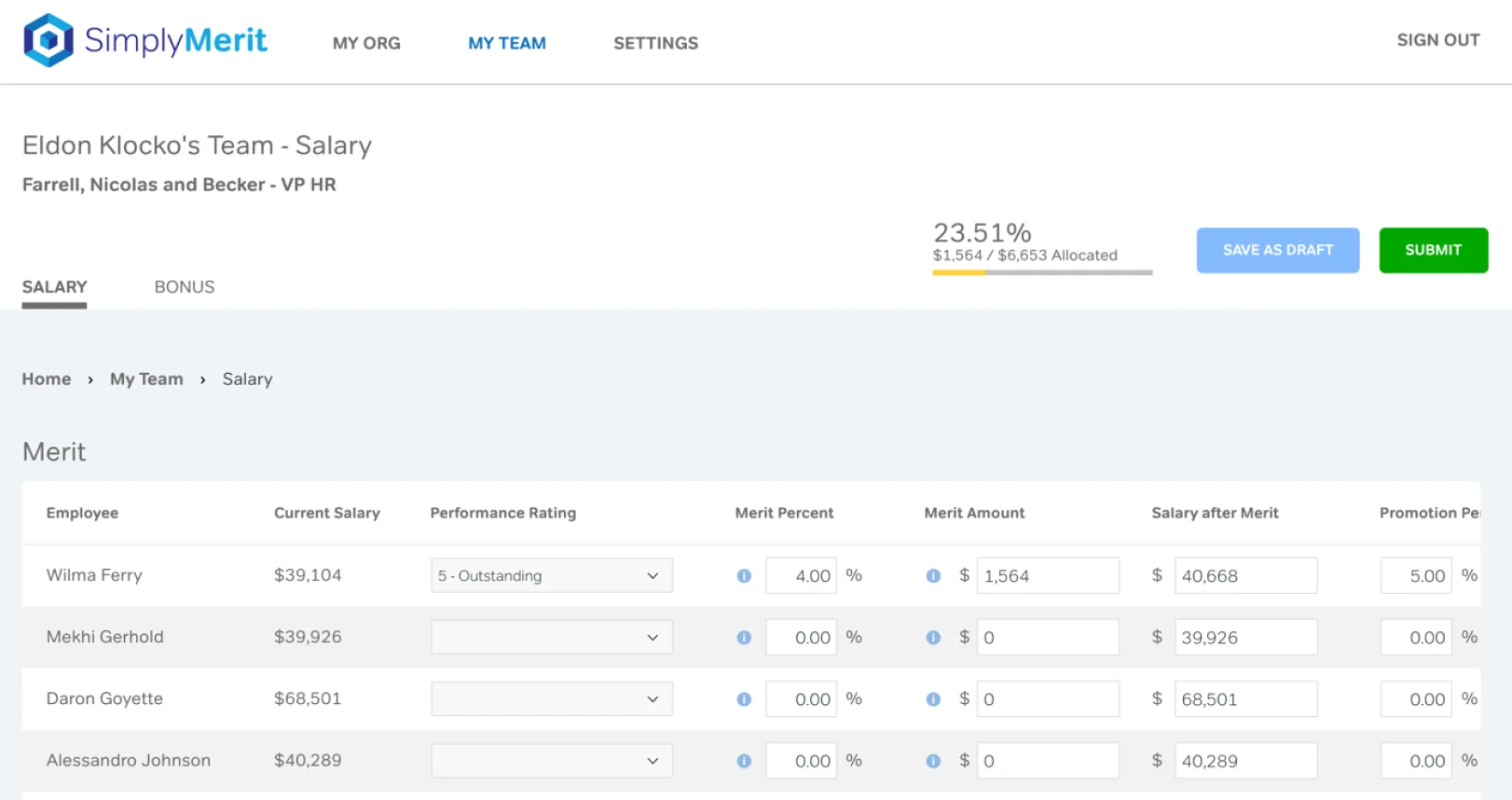
SimplyMerit by MorganHR is a cloud-based compensation software solution specifically designed to help teams manage, automate, and optimize merit cycles and incentive pay budgeting.
To that end, the software focuses on empowering managers to optimize elements of their total rewards program, including merit pay, bonuses, and equity grants. It also helps managers and HR teams visualize how changes in incentive pay can affect their overall compensation structure.
Keeping that in mind, SimplyMerit may work best for you if you’re already familiar with the basics of compensation planning and are just looking for a tool to help you navigate merit and incentive compensation.
One of the highlights of the compensation tool is the pay equity alerts. They notify managers, HR professionals, and leadership about areas where they could make their bonus and merit schemes more equitable and fair.
Notable features
- Automated workflows for merit pay revision requests and approvals
- Collaboration features
- Analytics and reporting
- Compensation modeling and planning
- Doesn't integrate with all HRIS systems easily
- Evolving platform that still needs development in some areas
- list item
10. Workday HCM
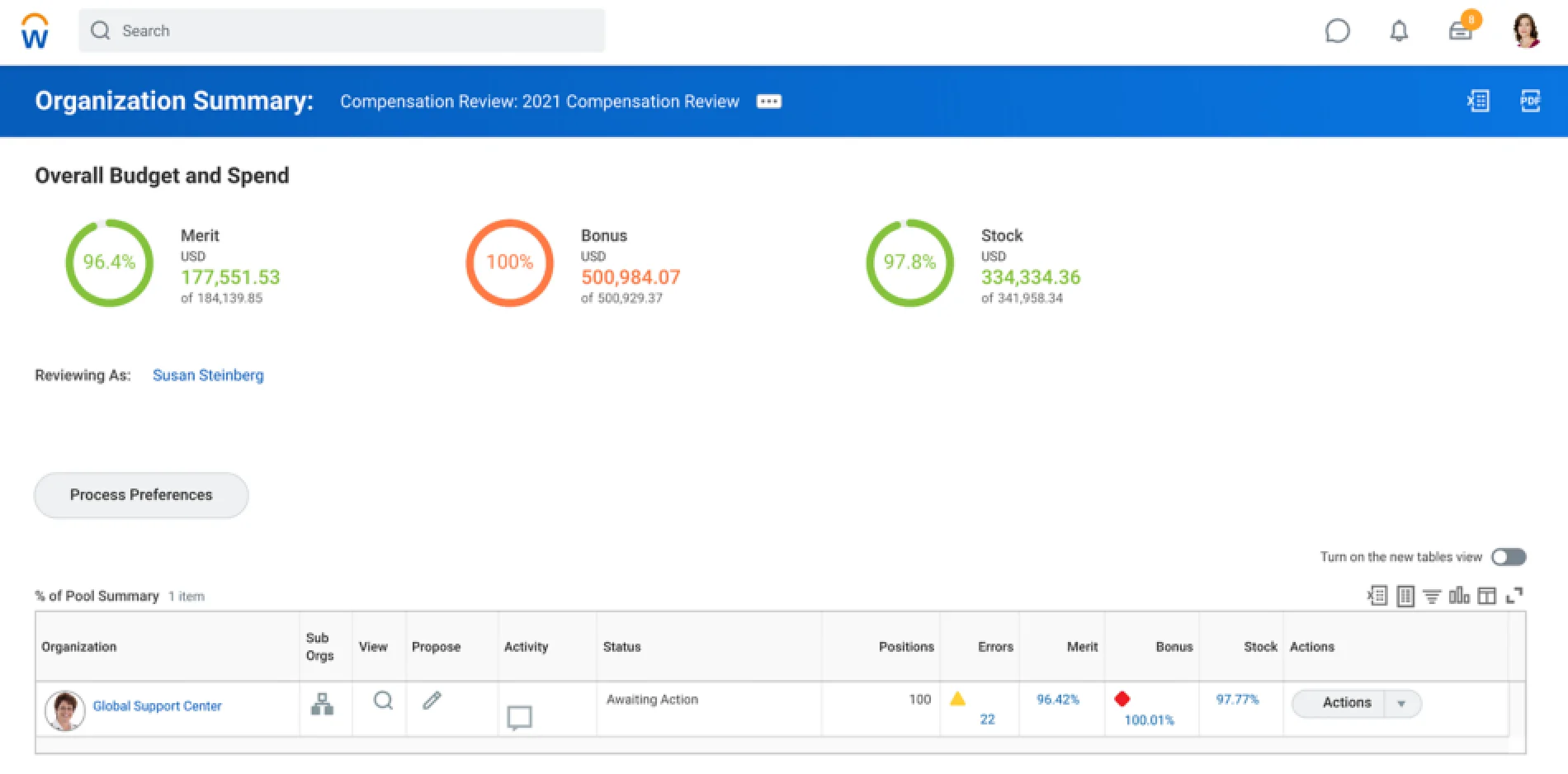
Workday is a human capital management (HCM) system that offers solutions for workforce management and planning, but it also has specialized compensation software for companies. With Workday’s compensation management system, managers, leadership, and HR teams can collaborate to create compensation packages that include base pay and total rewards.
A notable Workday feature is that the platform makes it easier to work with external compensation survey data.
Notable features
- Compensation analysis tools
- Pay equity dashboards
- Total rewards statements
- Compensation review tools
- Provides a well-rounded impression of employee progress
- Cloud-based solution
- Users enjoy the Slack integration
- list item
Frequently Asked Questions
Provides clarity on work expectations by providing a centralized location for answers;Gives employees a place to provide open and constructive feedback on the workplace;Cuts down on the amount of physical paperwork employees need to sign and keep track of.
Provides clarity on work expectations by providing a centralized location for answers;Gives employees a place to provide open and constructive feedback on the workplace;Cuts down on the amount of physical paperwork employees need to sign and keep track of.
Provides clarity on work expectations by providing a centralized location for answers;Gives employees a place to provide open and constructive feedback on the workplace;Cuts down on the amount of physical paperwork employees need to sign and keep track of.
Provides clarity on work expectations by providing a centralized location for answers;Gives employees a place to provide open and constructive feedback on the workplace;Cuts down on the amount of physical paperwork employees need to sign and keep track of.
Common Pricing questions
Our Customer Success team will help you get up and running and guide you to customize Leapsome to your organization’s needs. To learn more about the services we offer, head to our customer experience page.
Please note: Our customer success team’s services are only available to customers who implement Leapsome with an annual contract of €6,000 (or US$6,000) or more. However, ongoing email support and our Success Center of articles, videos, and best-practice resources are always available for all customers.
Yes, absolutely! You can test out Leapsome free of charge for a full 14 days — no credit card required.
Pricing depends on the number of employees, modules used, and contract length. You can use the calculator above to see an estimate of the price per employee per month by selecting the modules that you are interested in but please reach out to get a quote.
Continuous feedback is essential for employee development. To facilitate this, the Competency Framework, Instant Feedback, and Meetings modules are included in all plans, for all customers, at no extra cost.
These features are tightly integrated with the other parts of the platform. You can think of these as the glue that binds your processes together, giving your employees the tools to establish a culture of regular feedback and recognition.
Thanks to our best practice frameworks, Leapsome is ready to use from day 1. The setup is made easy with integrations with major HRIS platforms. Full implementation is usually done in 1–4 weeks.
There’s no setup fee and no additional or hidden costs!
The Leapsome platform — including all email notifications — is available in 13 languages: Chinese, Dutch, English, French, German, Italian, Japanese, Korean, Polish, Portuguese, Russian, Spanish, and Swedish. Our sales team, customer support team, and our Success Center are available in English and German.
Our Customer Success team will help you get up and running and guide you to customize Leapsome to your organization’s needs. To learn more about the services we offer, head to our customer experience page.
Please note: Our customer success team’s services are only available to customers who implement Leapsome with an annual contract of €6,000 (or US$6,000) or more. However, ongoing email support and our Success Center of articles, videos, and best-practice resources are always available for all customers.
Yes, absolutely! You can test out Leapsome free of charge for a full 14 days — no credit card required.
Pricing depends on the number of employees, modules used, and contract length. You can use the calculator above to see an estimate of the price per employee per month by selecting the modules that you are interested in but please reach out to get a quote.
Continuous feedback is essential for employee development. To facilitate this, the Competency Framework, Instant Feedback, and Meetings modules are included in all plans, for all customers, at no extra cost.
These features are tightly integrated with the other parts of the platform. You can think of these as the glue that binds your processes together, giving your employees the tools to establish a culture of regular feedback and recognition.
Thanks to our best practice frameworks, Leapsome is ready to use from day 1. The setup is made easy with integrations with major HRIS platforms. Full implementation is usually done in 1–4 weeks.
There’s no setup fee and no additional or hidden costs!
The Leapsome platform — including all email notifications — is available in 13 languages: Chinese, Dutch, English, French, German, Italian, Japanese, Korean, Polish, Portuguese, Russian, Spanish, and Swedish. Our sales team, customer support team, and our Success Center are available in English and German.
If your compensation strategy is lacking in, well, much of a strategy, it’s time to upgrade to a compensation management system to help you make data-backed decisions for a fairer, more equitable compensation scheme.
While the variety of compensation management tools out there is encouraging, it can also be overwhelming. Ultimately, you have to make a choice that will enable not only your business to grow and your people to thrive.
So, if you’re looking for the best compensation management software solution for your needs, give Leapsome a try. Our holistic platform will empower you to take a transparent, consistent approach to compensation and promotion and enable your employees to grow and thrive.
💥 Eine gerechte Vergütung sorgt für eine blühende Kultur
Erfahren Sie, wie Leapsome es Benutzern ermöglicht, transparente, datengestützte Vergütungsprozesse aufzubauen, die das Mitarbeitererlebnis bereichern.
Book your demo





.png)












.webp)



.webp)
















